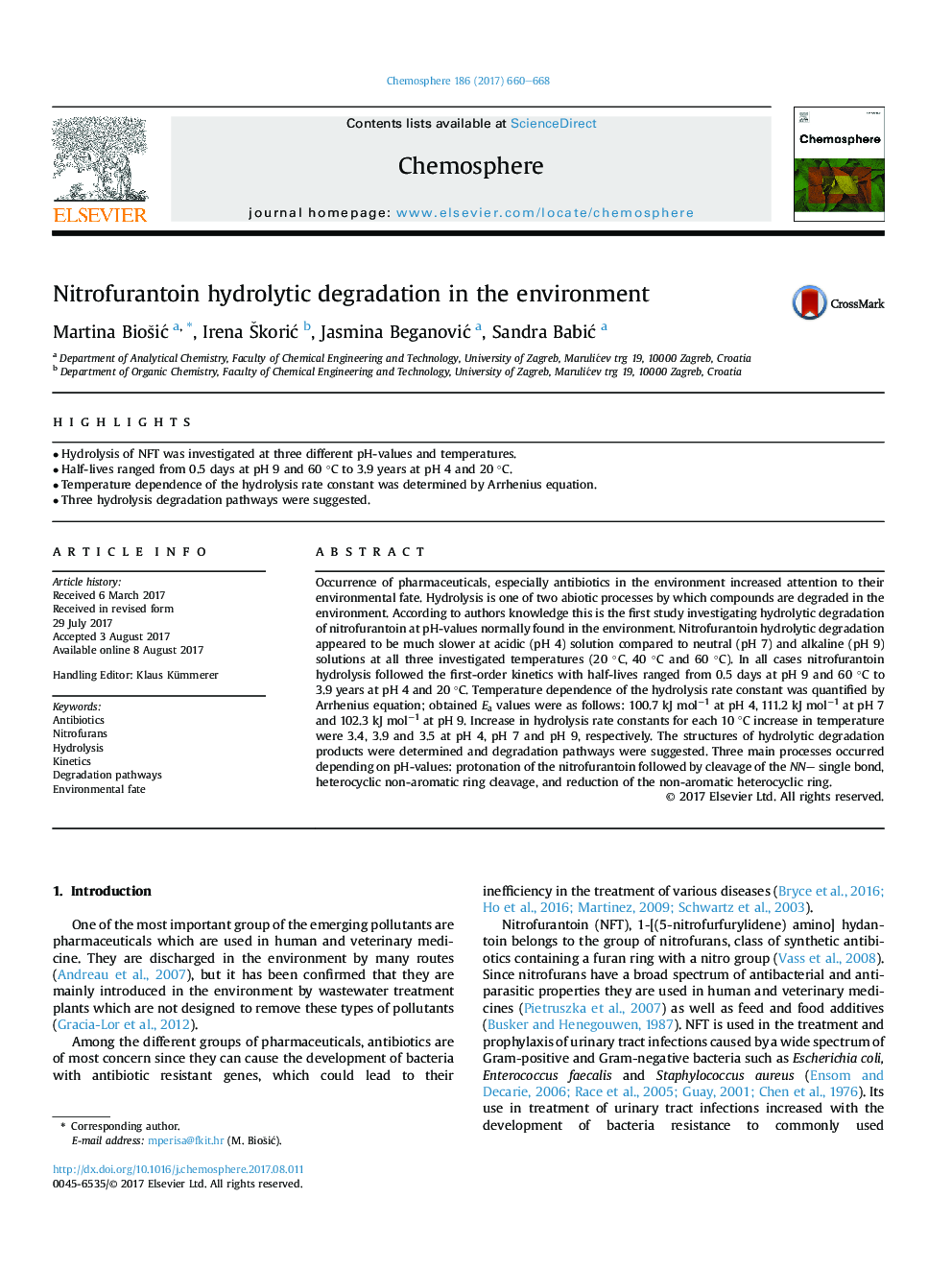| کد مقاله | کد نشریه | سال انتشار | مقاله انگلیسی | نسخه تمام متن |
|---|---|---|---|---|
| 5746033 | 1618785 | 2017 | 9 صفحه PDF | دانلود رایگان |
- Hydrolysis of NFT was investigated at three different pH-values and temperatures.
- Half-lives ranged from 0.5 days at pH 9 and 60 °C to 3.9 years at pH 4 and 20 °C.
- Temperature dependence of the hydrolysis rate constant was determined by Arrhenius equation.
- Three hydrolysis degradation pathways were suggested.
Occurrence of pharmaceuticals, especially antibiotics in the environment increased attention to their environmental fate. Hydrolysis is one of two abiotic processes by which compounds are degraded in the environment. According to authors knowledge this is the first study investigating hydrolytic degradation of nitrofurantoin at pH-values normally found in the environment. Nitrofurantoin hydrolytic degradation appeared to be much slower at acidic (pH 4) solution compared to neutral (pH 7) and alkaline (pH 9) solutions at all three investigated temperatures (20 °C, 40 °C and 60 °C). In all cases nitrofurantoin hydrolysis followed the first-order kinetics with half-lives ranged from 0.5 days at pH 9 and 60 °C to 3.9 years at pH 4 and 20 °C. Temperature dependence of the hydrolysis rate constant was quantified by Arrhenius equation; obtained Ea values were as follows: 100.7 kJ molâ1 at pH 4, 111.2 kJ molâ1 at pH 7 and 102.3 kJ molâ1 at pH 9. Increase in hydrolysis rate constants for each 10 °C increase in temperature were 3.4, 3.9 and 3.5 at pH 4, pH 7 and pH 9, respectively. The structures of hydrolytic degradation products were determined and degradation pathways were suggested. Three main processes occurred depending on pH-values: protonation of the nitrofurantoin followed by cleavage of the NN single bond, heterocyclic non-aromatic ring cleavage, and reduction of the non-aromatic heterocyclic ring.
Journal: Chemosphere - Volume 186, November 2017, Pages 660-668
